A Ranking Of Australia’s Coats Of Arms By Which Would Win In A Fight
This is serious journalism.
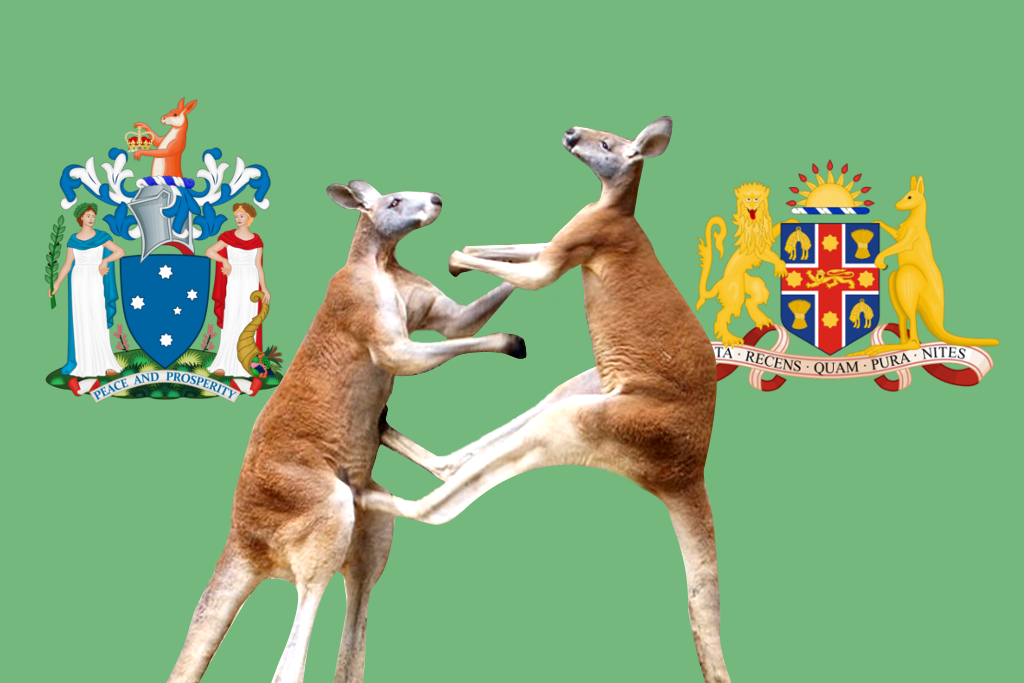
Australian states battling it out in the hope of being #1 in some arbitrary category is a great Australian pastime. See for example the State of Origin, or the existence of Canberra.
Yet for a nation insistent upon ranking and re-ranking our states and territories based on ever-more-specific and useless criteria, there are some areas where we’ve really dropped the ball.
Take, for example, the as-yet unattempted feat of ranking states and territories based on which of their coats of arms would win in a fight.
“But Sam,” you may be thinking, “how can a coat of arms fight? It is but a heraldic visual design on an escutcheon (a fancy word for shield), surcoat or tabard (Wikipedia 2017)”. Let me set your minds at ease: of course, no one is suggesting that we actually physically procure the coats of arms and smash them upon each other until the weaker and unworthy opponent crumbles to dust. That would be silly.
Rather, I put it to you that each individual coat of arms contains a number of figures (usually animals) and objects (usually plants, shields, and obsolete tools from a more bucolic era) that together comprise the team each state/territory brings to the fight. I have spent many hours considering the outcomes of fights between various combinations of these teams, and I have come to the conclusion that there is a definitive ranking of Australian states and territories based on these criteria.
Without further ado, then, here’s that ranking. No state or territory coats of arms were harmed in the writing of this article, and no correspondence will be entered into. My decision is final.
8. Tasmania
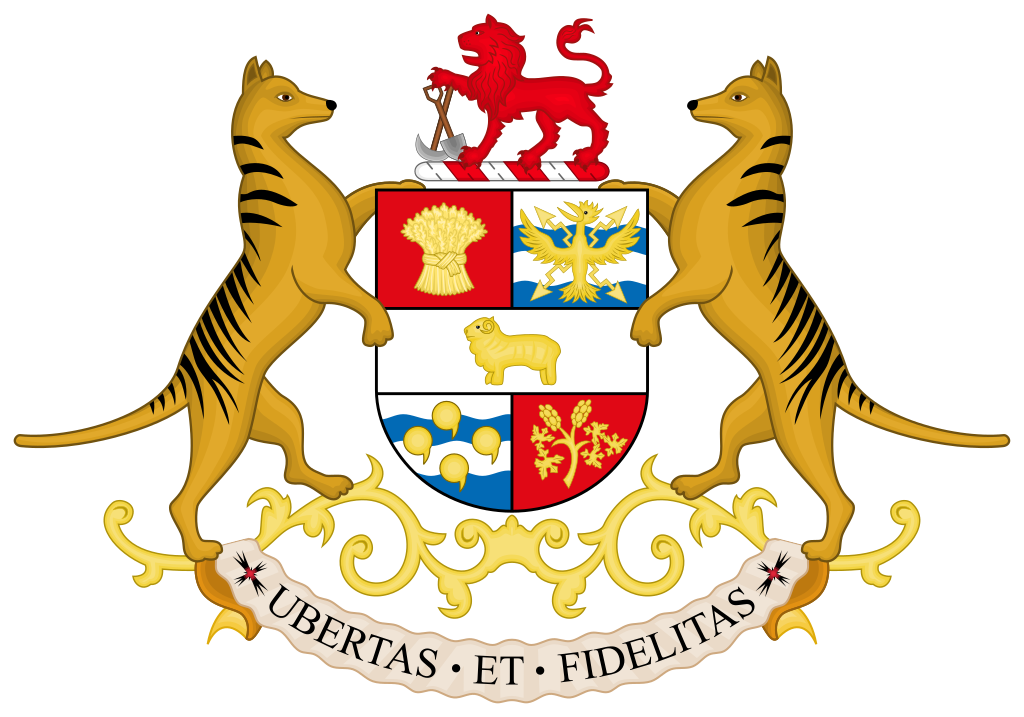
In 8th place, we have Tasmania — and no, its low ranking is not a sign of mainland bias. The uselessness of this state’s crest will become increasingly apparent as we examine the coats of arms that are better than it (literally all of them), but let’s quickly recap its failings anyway.
There are two of them, and they are extremely prominent: Tasmania’s shield is supported by a pair of thylacines, aka Tasmanian tigers, which have been extinct (???) since the 1930s. Extinct animals cannot win a fight, even if they’re aided by a tiny shovel-wielding lion, small gold sheep, electrocuted bird (Zapdos?) and a sheaf of wheat, as seen on Tassie’s coat.
Take better care of your heraldic symbols. Their inability to come back and bite you will come back to bite you.
7. Victoria
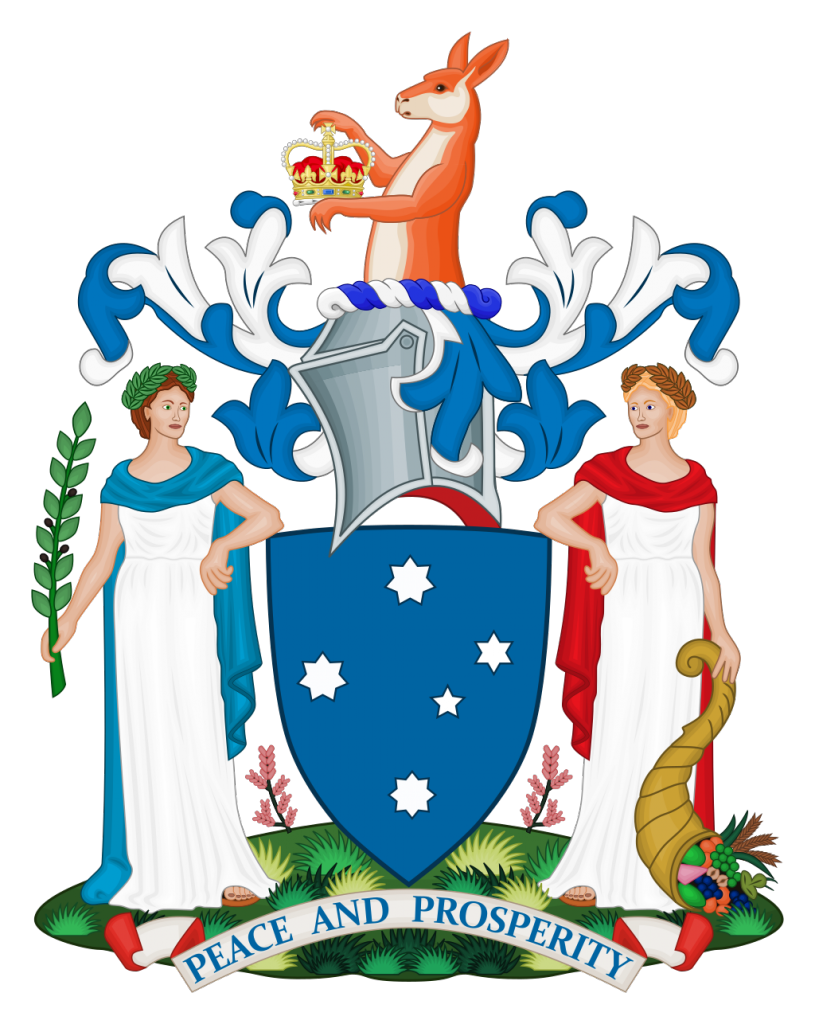
Victoria’s coat of arms would almost certainly have come last had Tasmania not fucked up so hard by killing off its emblem. I mean, look at it — for starters, they’ve included only half of a kangaroo, and it’s the rubbish upper half. Anyone who’s ever fought a kangaroo is dead, but anyone who’s witnessed that death knows it was caused the legs and tail.
It gets worse — instead of including other animals to help out, Victoria has gone with… humans. They’re standing above a banner that says “peace and prosperity”, which is a bit off-brand for white people but nonetheless indicates that these two aren’t particularly into fighting.
Even if they were keen on a biff, the one on the left is holding a leafy branch with low structural integrity. The one on the right has a pretty solid-looking cornucopia, but that’s the only thing they’ve got going for them.
6. Queensland
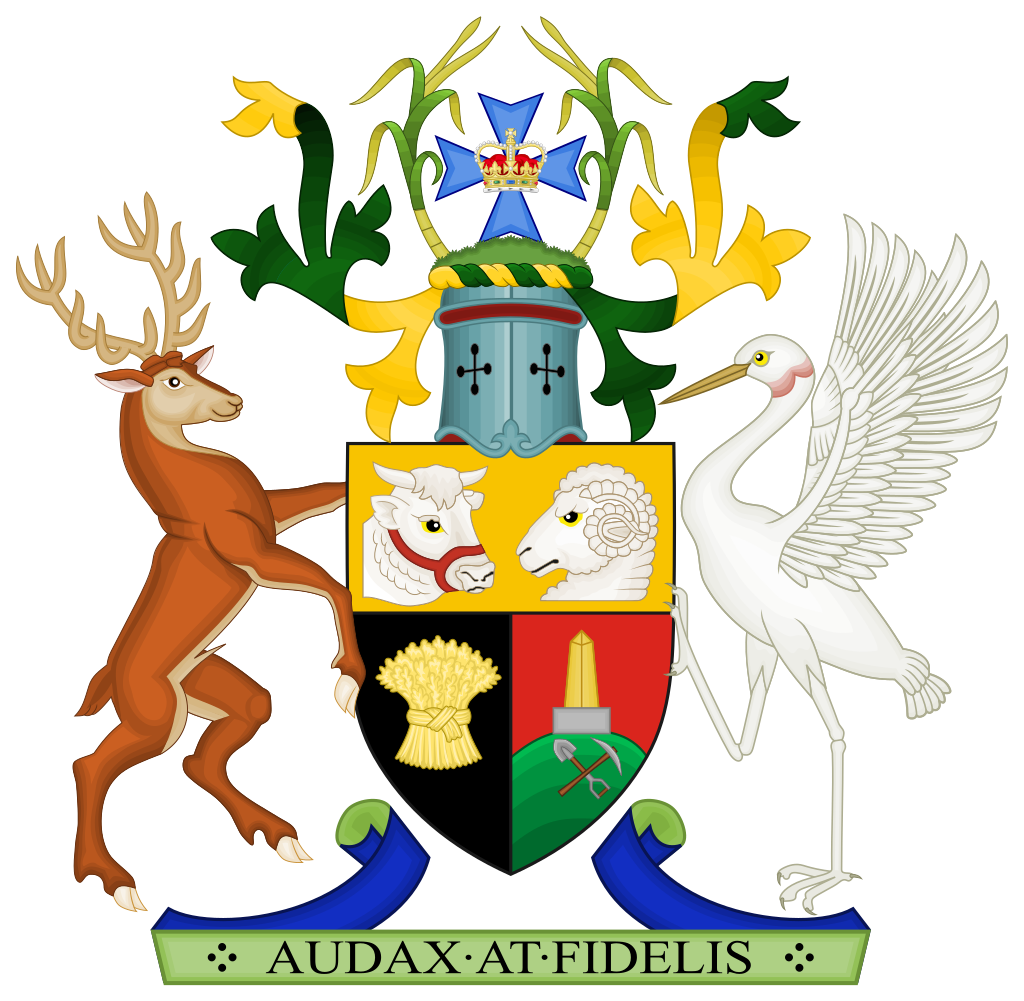
At first glance, Queensland’s coat of arms looks promising, even threatening. It’s flamboyant, dramatic, and there’s pointy stuff capable of being menacing. But dig a little deeper and it all falls apart.
Let’s begin by discarding the useless bits: the disembodied heads of various livestock are not much help, nor is the sheaf of wheat unless the enemy is gluten intolerant. The pointed gold obelisk, shovel and pick are more promising, but they’re simply tools without someone to wield them.
So: who will fight for Queensland? Unlike Tasmania, Queensland has wisely chosen animals that still exist to man its coat of arms. Queensland has, however, failed to select a pair of animals capable of the teamwork necessary to annihilate an opponent.
On the right, we have a brolga; on the left, a red deer. Now, red deer can be menacing. They make a horrific noise like the combination of the worst burp and the worst fart you’ve ever heard, which is handy for repelling an opponent. They’ve got a mean kick, and giant prongs on their heads.
Unfortunately, red deer only have the head-prongs (okay, antlers) for around half the year, during which time they’re not particularly interested in cooperating. Meanwhile, a brolga’s response to being threatened is to bust a move. Enough said.
5. New South Wales
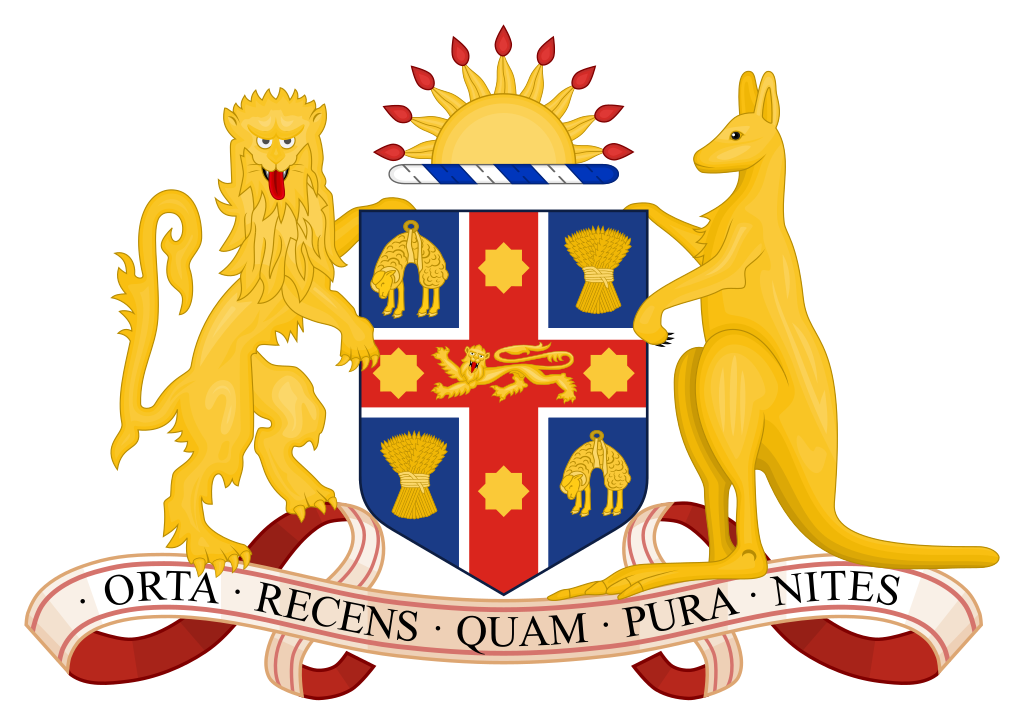
NSW definitively one-ups Victoria from the get-go by including the entire kangaroo: it’s a promising start. They’ve also got a lion, though it doesn’t look particularly serious with its tongue out like that. Get your head in the game, bro.
NSW also has useless wheat and sheep fleeces, sure, but it balances that out by including the sun, which is also pretty formidable — melanoma is no joke.
The sun is a slow-acting weapon, though, and I fear the kangaroo and lion may also be. You see, NSW, obviously compensating for something, has taken the unconventional step of including mythical golden versions of its supporting animals instead of just drawing a brown or grey kangaroo like the rest of us.
They look nice, sure, but given NSW’s typical budget for public works of art we can only assume they’ve achieved the look by spray-painting regular animals with a thin gold veneer. That surface layer would almost certainly impede flexibility, mobility and reaction time — all of which are critical in a high stakes championship fight.
4. Australian Capital Territory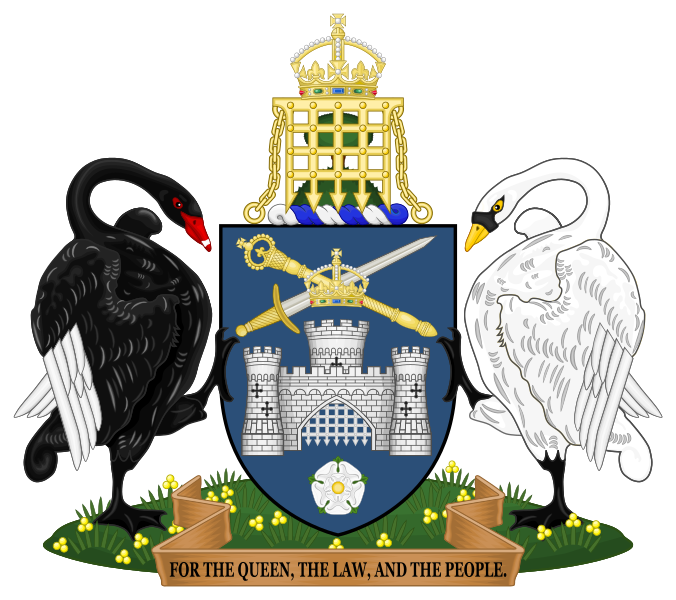
In a moment of vindication for Canberrans, it’s the ACT that delivers our first real contender today. Whoever designed this coat of arms was ready for a fight: there are weapons, a portcullis, and even a castle for defence. And most importantly, there are swans. Plural.
If you have never been attacked by a swan, take a moment to feel deeply, intensely grateful. I have been, and I can tell you firsthand that a swan will fuck you up. There is, in fact, an entire section on YouTube dedicated to videos of swan attacks. Here is part 27 of one such swan attack compilation.
Now look at the swans in the coat of arms, which are clearly reaching for a sword and a mace respectively. Can a bird with webbed feet carry a medieval weapon? Frankly, I don’t want to find out.
3. Western Australia
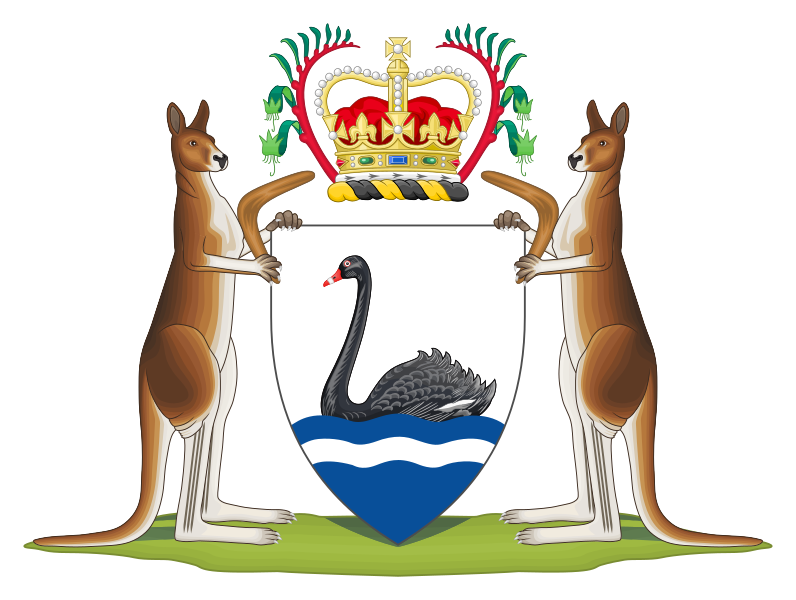
We’ve established that swans are terrifying. We’ve also established that kangaroos are terrifying. Western Australia has known this and had it sorted since ’69 (nice) when this coat of arms was granted.
Just look at it — a black swan, two red kangaroos (the largest variety of kangaroo), and the kangaroos are holding boomerangs.
You’d think this’d be pretty hard to beat. However…
2. Northern Territory
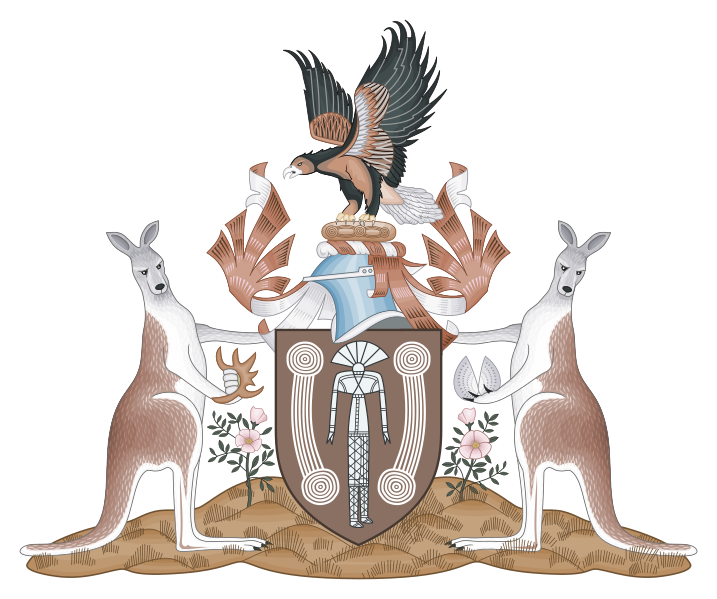
What’s better than two kangaroos and a black swan? Oh, just two kangaroos and a wedge-tail eagle.
Sure, these kangaroos are only holding spiky shells and not boomerangs, but the eagle more than makes up for it. They’ve been known to attack things as big as kangaroos.
Watch this video of one attacking a drone and tell me you’d be happy to take it on. Didn’t think so.
At this point, these coats of arms are seeming pretty impossible to beat. How do you improve on perfection, after all?
One state has found the answer. Enter, the champion:
1. South Australia
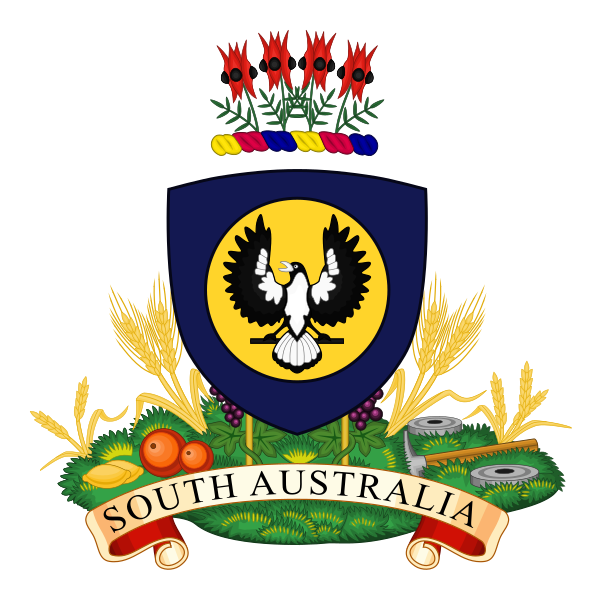
It’s a magpie — the bird of the year — coming out of the sun. And there’s a pickaxe. And given the wheat, and what look a lot like free weights lying on the ground (okay, so they’re manufacturing cogs, but go with it) it’s been bulking.
Well played, South Australia. Well played.
